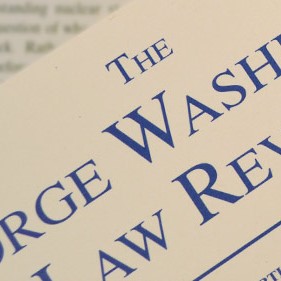Neil Weinstock Netanel · June 2008
76 GEO. WASH. L. REV. 952 (2008)
In his seminal 1967 article, Access to the Press—A New First Amendment Right, Jerome Barron argued that First Amendment doctrine is predicated on the unrealistic, romantic notion that speakers share a rough equality of opportunity to compete in the marketplace of ideas. That view, he underscored, ignores the mass media’s overwhelming dominance of public discourse. In the face of mass media dominance, to protect speakers’ right to preach atop a soapbox or leaflet on street corners does virtually nothing to serve the First Amendment’s interest in full and free discussion of the widest variety of competing ideas. We must, rather, direct First Amendment doctrine to how public discourse actually operates in practice, to be fully cognizant of the different functions the various media serve and how speakers can effectively air their views. In that light, to focus solely on restraining government from suppressing speech is to overlook the propensity of private power to deny speakers effective access to potential audiences. As Barron insisted, only the mass media “can lay sentiments before the public, and it is they rather than government who can most effectively abridge expression by nullifying the opportunity for an idea to win acceptance.”
Given this emergence of Internet speech, Barron’s call for a robust, egalitarian First Amendment may well be best met today not by a right of access to the mass media, but by meaningful opportunities to bypass the mass media. Our interest in rigorous debate among diverse and antagonistic voices might be best served not by requiring media giants to act as quasi-common carriers, but by insuring that peer communication, user-generated content, and new media will continue to level the playing field. The free speech concern is not so much that commercial mass media fail to air unorthodox views—the Internet after all is chockfull of dissident voices—but rather that media and telecommunication conglomerates might successfully bring the Internet to heel, drive out new media, and subject digital communication to their proprietary control. Hence, to a large extent, the fulcrum of ensuring real opportunities for expressive diversity has moved from calls for speakers’ right of access to broadcast and print media to issues involving network neutrality and copyright. The bulk of scholarly and activist attention (among those who sympathize with Barron’s proactively egalitarian vision of the First Amendment) has moved from how to regulate mass media to promote expressive diversity to how to ensure that individual speakers and new media have access to the conduits of digital communication and are able to build upon and disseminate the salient images, sounds, and texts that make effective communication and self-expression possible.
This Article focuses on one part of that equation: copyright and its role in shaping public discourse in the digital arena. In Part I, I return to Barron’s still cogent call for a “contextual approach” to the First Amendment. Barron’s proposal for a speakers’ right of access to the media has sparked decades of debate, the details of which are beyond this Article’s scope. Rather, I take up Barron’s general vision of a proactively egalitarian First Amendment and assess how it might apply in the digital arena, touching upon speakers’ right of access in passing. I ask, in particular, whether we should aspire to mass media bypass rather than access, and whether the multiplicity of new media and Internet sites for user-generated expression actually can and should supplant traditional mass media. I conclude that peer speech over the Internet can serve as an effective means for speakers to convey their messages, even if online peer speech is “effective speech” in a different, more complex manner than speaker access to the mass media. Yet I also conclude that traditional mass media play a vital, ongoing First Amendment role and, accordingly, that we should aim to preserve the place and vitality of the mass media even as we insist on giving considerable free play to peer expression.
I then turn to copyright’s part in furthering First Amendment goals. Copyright law is part and parcel of what Thomas Emerson has termed our “system of freedom of expression,” the elaborate matrix of speech-related entitlements, institutions, and regulatory regimes that both inform and supplement the First Amendment. As the Supreme Court has iterated, copyright serves as an “engine of free expression.” It provides an incentive for the creation and dissemination of a broad range of original expression, subsidizes a robust sector of authors and media enterprises independent from government subsidy, and highlights the value of individuals’ creative expression in our public discourse. But in so doing, copyright law inevitably favors some media and potential speakers, and some types of expression, over others. Copyright both underwrites original expression and impedes uses of existing expression. It supports independent authors and publishers, but has also come to entrench copyright industry incumbents and burden new media.
Part II addresses copyright’s potential for burdening speech. It focuses in particular on incumbent mass media’s untoward use of copyright as a vertical restraint to stifle the new media that provides platforms for peer speech. Part III then examines the other side of the coin: copyright’s continuing part in underwriting traditional media, a salutary function that stands in some tension with the media’s use of copyright to suppress new media competition. Finally, Part IV considers copyright’s potential for enabling powerful new media to threaten expressive diversity in the digital age in much the same way that incumbent media has overwhelmingly dominated public discourse in the print and broadcast era.

